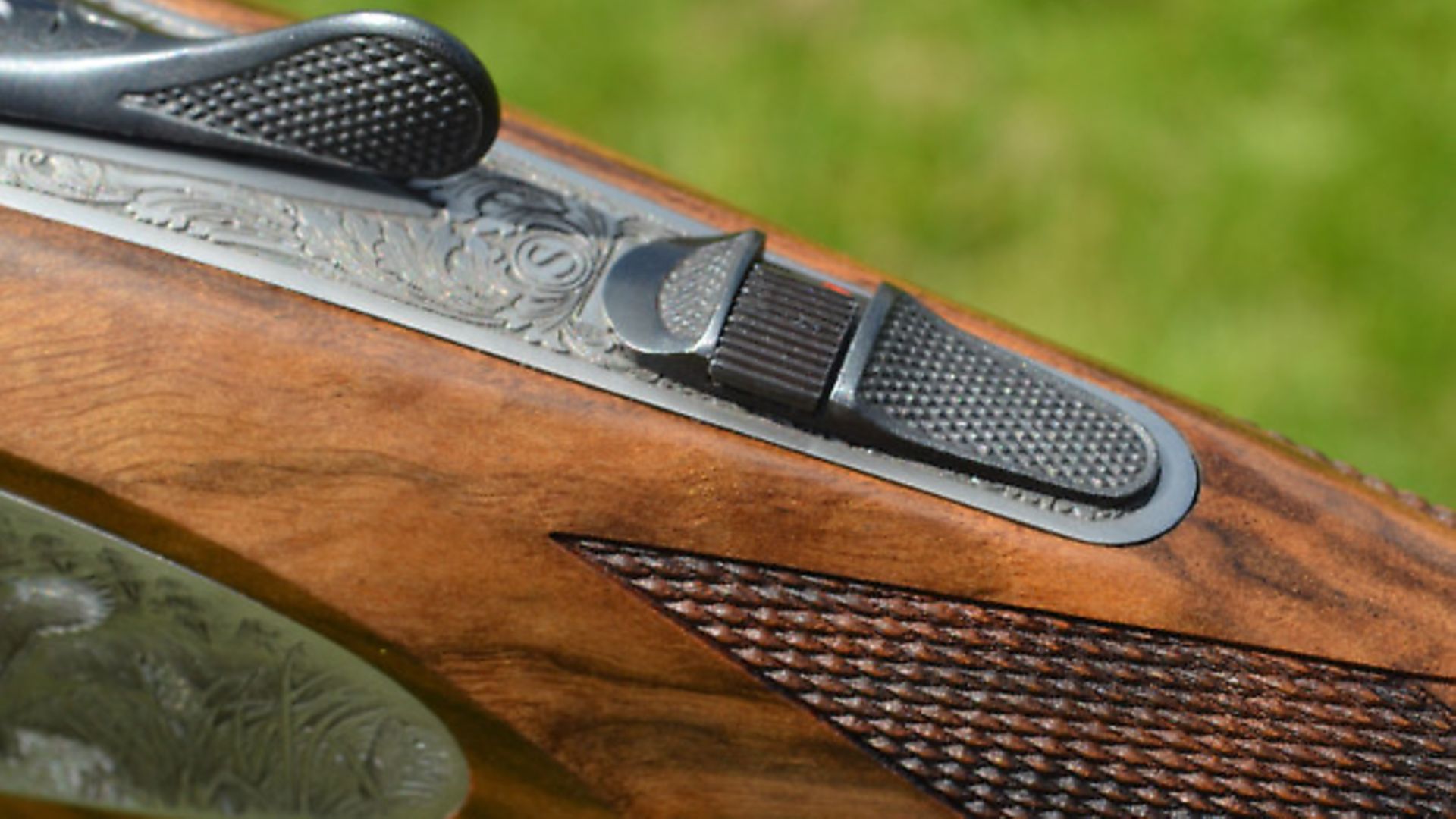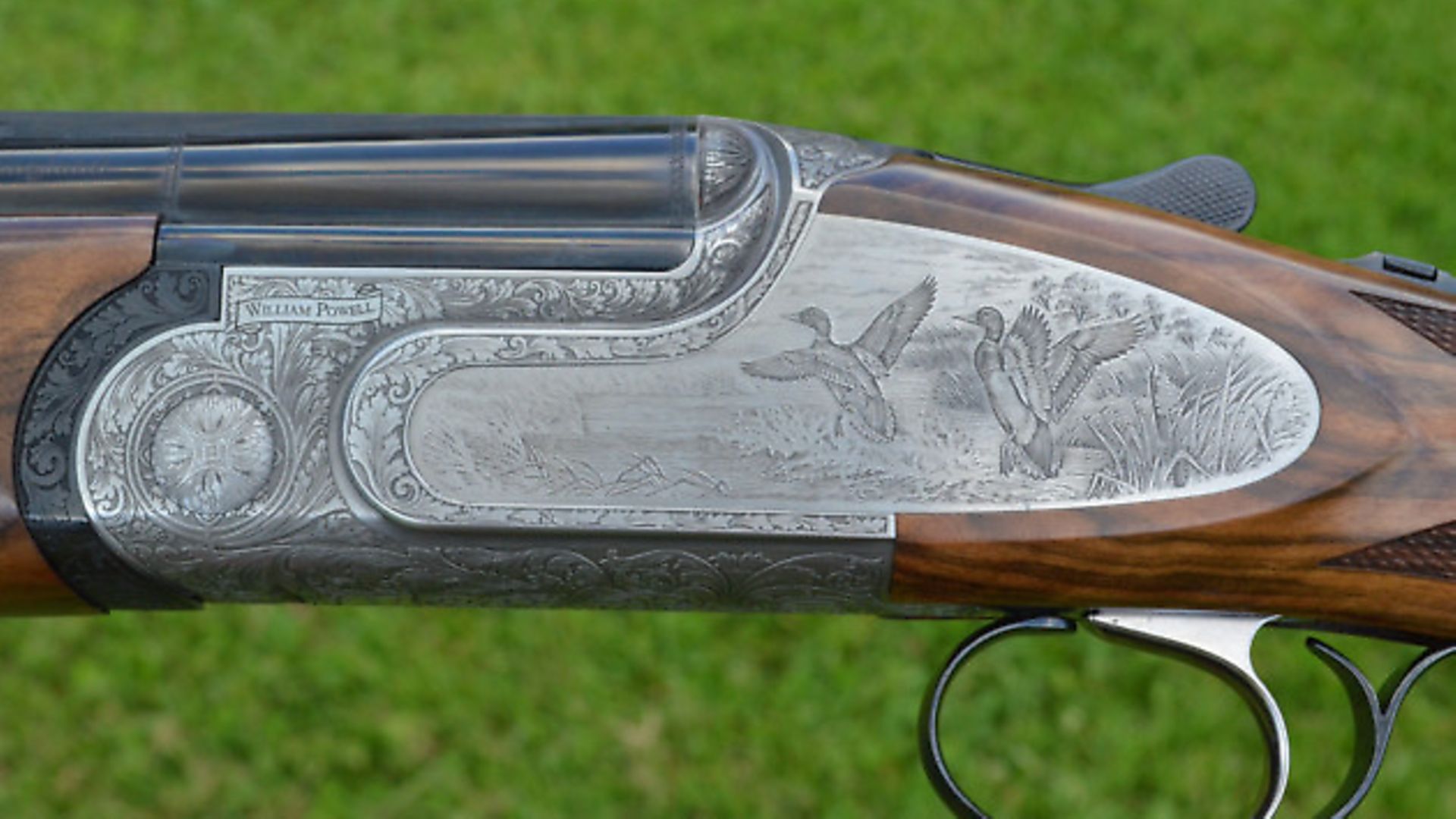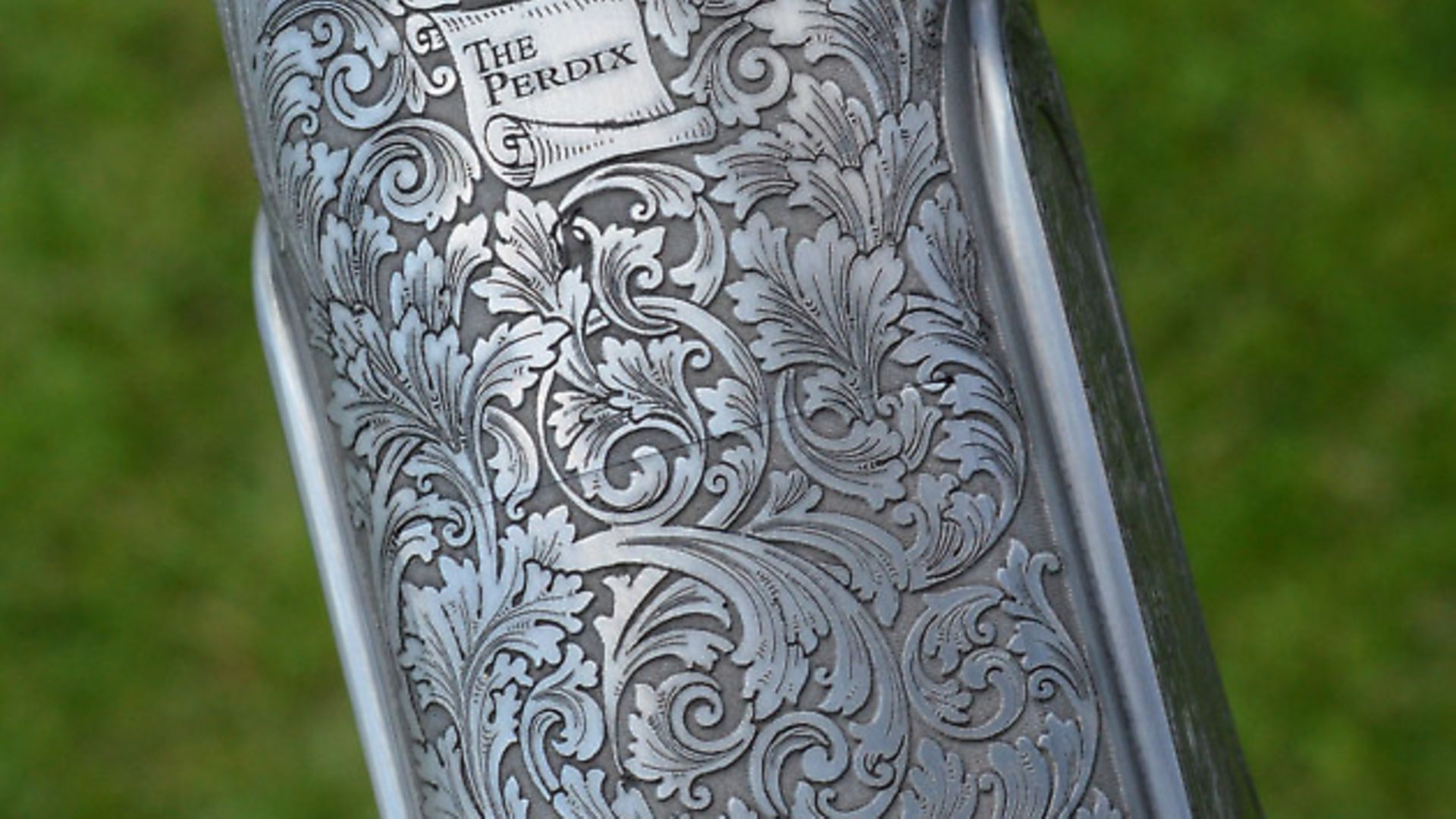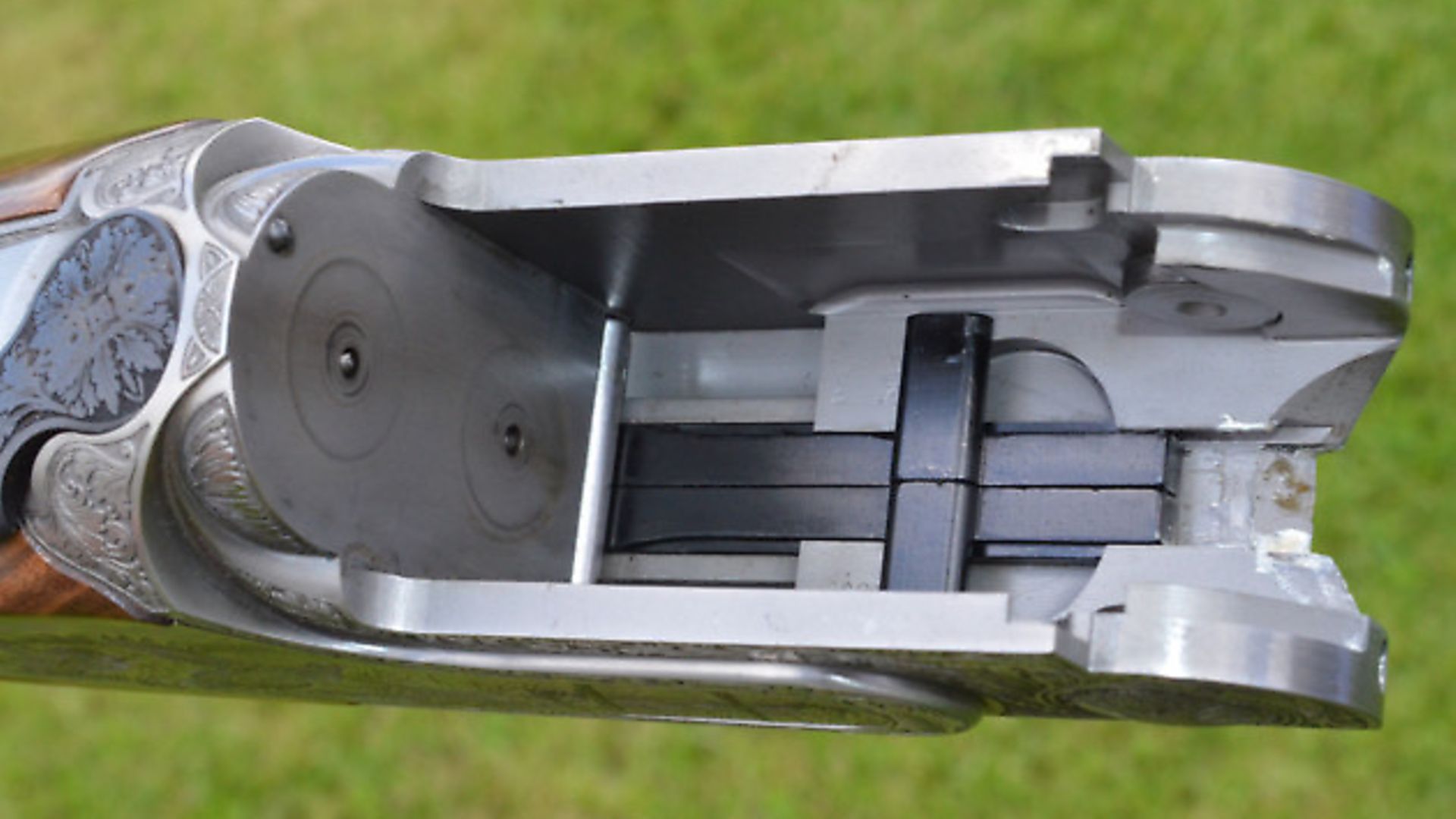William Powell’s new high spec Perdix both impresses and surprises Mike,
being solid, well-finished and well-priced
 credit: Archant
credit: Archant
This month, we are looking at a new well-priced, side-plated over-and-under from William Powell. The Perdix, part of the Powell Continental range, is made in association with Battista Rizzini and comes in at a reasonable £2,995 (about half the price of a new Beretta EELL). Guns in the Continental range start at £1,975
for the Perseus without plates, and go up to £5,850 for the round action Phoenix and £12,950 for the side-plated and notably well-finished Pegasus.
First impressions of the Perdix, meanwhile, are excellent considering the comparatively reasonable bottom line. The quality and style of both engraving and wood would not look out of place on a gun costing significantly more. The sideplates are competently machine engraved with pheasants and ducks. The body and belly of the action boast profuse deeper cut scroll. The overall effect is pleasing although covering the gun with scroll might be considered too.
Available in 12- or 20-bore and with 28 or 30” barrels (the test gun is a 30” 12) you might easily mistake the Perdix for something costing more (indeed I was well out when I first estimated its price). Aesthetically, it is hard to knock and the action, although not as shallow as a Beretta or Perazzi, is nevertheless quite compact for its type. I also liked the form of the stock which has a (quite large and long) semi-pistol grip and a rounded Boss-style fore-end with front button fastener. Both suited the gun well, although the grip could be a little slimmer. In 20-bore, where the top and bottom straps are a little closer, I would say the stock would be very nearly perfect in style and shape. My own call with this type of gun would usually be for a 30” 20. I just think the gauge suits the action design particularly well. The main market remains for 12-bores though, and 12s still outsell 20s by quite a substantial margin. I have to admit, they are more versatile as well, especially if you want to shoot game and clays.
On dry mounting the Perdix, one is struck by how solid it feels. It’s not heavy at 7lbs 9oz but it is no lightweight either, which for most applications is a distinct advantage. The monobloc barrels are multi-choked (five come with the gun) and 3” fleur de lys steel shot-friendly, proofed. Joining ribs are solid and the sighting rib is vented and fairly narrow (6mm), which helps to keep barrel weight down to 1400g. Blueing is deep and lustrous. Wood to metal fit is good. The gun, generally, looks elegant. The Perdix is primarily intended for game, but it would not be out of place shooting clays. Indeed, I would say this has the ideal sort of spec for an all-rounder – 30” barrels, multi-chokes and not heavy or light. Just the ticket for mono-gunning!
 credit: Archant
credit: Archant
Powell, meantime, seem to take a little extra care in spec’ing their guns and ensuring the quality of finish (they have real input, it is not just a re-naming exercise). Putting the Perdix under the magnifying glass, no grave flaws are revealed. On the contrary, the high-tech machined action is well put together and the internal and external finish of the barrels reassures. The forcing cones are of medium length and the bores themselves (bored at 18.4mm) are chromed, which is my practical preference in a mass produced over-and-under. There is a traditional brass bead at the muzzles – these tend to be more durable than plastic types.
Sideplates apart, the action of the test gun is of typical Northern Italian/Gardonne pattern (excepting Beretta and Perazzi). It is a bifurcated lump design with trunnion hinging and Browning-type locking (so, in esssence it matches a Beretta-like hinging system to Browning-like bolting). It may present no real surprises mechanically, but, like an Anson and Deeley side-by-side or Silver Pigeon over-and-under, this is a very well-proven arrangement and one that is exceptionally reliable. It has the usual studs mounted in the inner action walls for the barrels to rotate upon when the gun is opened. Helical springs are used to power the hammers. The single trigger mechanism is of conventional bob-weight intertia type. A good sized, and positive, selector is placed on top of the conventional thumb-operated top strap safety. The trigger pulls were reasonable and not too heavy. The trigger blade was a comfortable shape.
The Perdix impresses with its woodwork too. The stock is made from walnut with excellent figure – again, better than one would expect at the price. It is also nicely oil-finished and well chequered (probably by laser). The length of pull is 15” to toe including a wooden butt-plate. There is an extra 1/8” to heel and 3/8” to toe. The comb is well-shaped. The fore-end is of a hand-filling, rounded pattern (a style which originates from Boss and once again is in fashion and ergonomically efficient). Drop measurements were good as well – 1 7/16” at the front of the comb and just over 2” to the rear. Cast off was the industry standard 1/8” at heel.
 credit: Archant
credit: Archant
 credit: Archant
credit: Archant